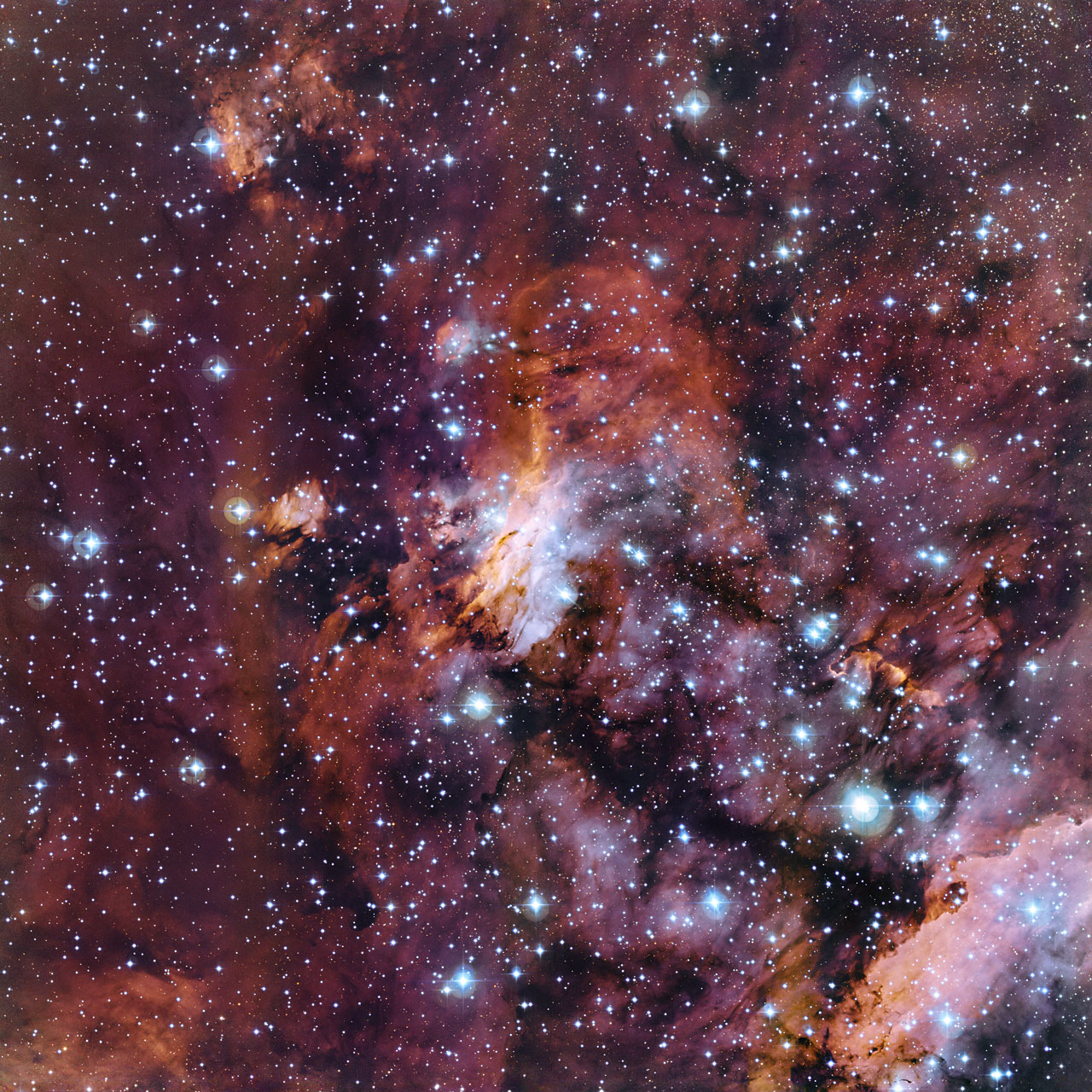Prawn Nebula View Offers Stunning Glimpse of 'Cosmic Recycling' (Video)

A new view of the Prawn Nebula shows "cosmic recycling" at work: Glowing clusters of newborn stars illuminate surrounding gas, expelled from an earlier stellar generation, which will eventually form into even newer stars.
The 2.2-meter telescope at the European Southern Obsevatory's La Silla Observatory in Chile snapped a choice section of the reddish nebula studded by young blue stars in a newly released image. The nebula, also called Gum 56 and IC 4628, is hard to see with the naked eye although it's around 250 light-years across — it is very faint, and mostly emits light at wavelengths not visible to humans.
That invisibility conceals a lot of action, as new stars form from the stellar nursery of the nebula's gas and debris: "The material forming these new stars includes the remains of the most massive stars from an older generation that have already ended their lives and ejected their material in violent supernova explosions," ESO officials said in a statement. "Thus the cycle of stellar life and death continues." When the dust and gas grows dense enough, a portion will collapse down into the beginnings of a star. [Video: See How Cosmic Recycling Seeds the Prawn Nebula]
Large clouds of charged hydrogen gas provide the red glow to the nebula. As ultraviolet energy is emitted from the young stars, it hits the nearby hydrogen and excites it, prompting the release of light with hydrogen's distinct reddish tinge.
The source of most of that radiation is a pair of rare, extremely bright blue giant stars (out of view in this photo). The huge, powerful stars have short life spans — only a million years or so before exploding into a supernova — and they generally appear in areas with rapid star growth.
Despite the rare stars, the area has not been carefully explored (besides in an extremely detailed 2013 image): "Given the two very unusual blue giants in this area and the prominence of the nebula at infrared and radio wavelengths, it is perhaps surprising that this region has been comparatively little studied as yet by professional astronomers," ESO officials said in the statement.
Email Sarah Lewin at slewin@space.com or follow her @SarahExplains. Follow us @Spacedotcom, Facebook and Google+. Original article on Space.com
Get the Space.com Newsletter
Breaking space news, the latest updates on rocket launches, skywatching events and more!
Join our Space Forums to keep talking space on the latest missions, night sky and more! And if you have a news tip, correction or comment, let us know at: community@space.com.

Sarah Lewin started writing for Space.com in June of 2015 as a Staff Writer and became Associate Editor in 2019 . Her work has been featured by Scientific American, IEEE Spectrum, Quanta Magazine, Wired, The Scientist, Science Friday and WGBH's Inside NOVA. Sarah has an MA from NYU's Science, Health and Environmental Reporting Program and an AB in mathematics from Brown University. When not writing, reading or thinking about space, Sarah enjoys musical theatre and mathematical papercraft. She is currently Assistant News Editor at Scientific American. You can follow her on Twitter @SarahExplains.











